News
Jim & Cary Yanny’s Guide to Diving in Indonesia
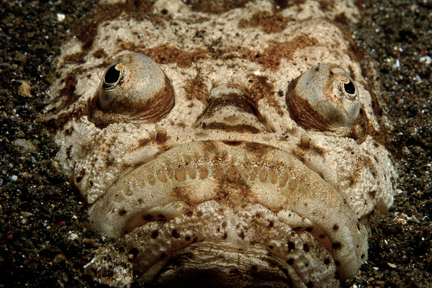
Part 1: Lembeh’s Little Monsters
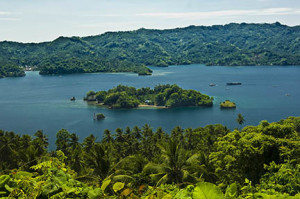 Royal Blood’s rock track “Little Monster” was one of my favourite chart hits of 2014. Maybe it’s the snarling lyrics, the thumping drum beat or the catchy bass guitar riff that gets into your head and won’t leave? Or could it be that the title reminds me of a real-life little monster I once encountered on a dive? The “monster” in question, of course, was a Stargazer and anyone who’s ever been fortunate to come across this most bizarre of fish should get my monster reference. (Actually, can a thing that buries itself totally below the sand, leaving only a shrimp-shaped lure protruding in water to tempt in an unsuspecting victim, actually qualify to be called a “fish”?)
Royal Blood’s rock track “Little Monster” was one of my favourite chart hits of 2014. Maybe it’s the snarling lyrics, the thumping drum beat or the catchy bass guitar riff that gets into your head and won’t leave? Or could it be that the title reminds me of a real-life little monster I once encountered on a dive? The “monster” in question, of course, was a Stargazer and anyone who’s ever been fortunate to come across this most bizarre of fish should get my monster reference. (Actually, can a thing that buries itself totally below the sand, leaving only a shrimp-shaped lure protruding in water to tempt in an unsuspecting victim, actually qualify to be called a “fish”?)
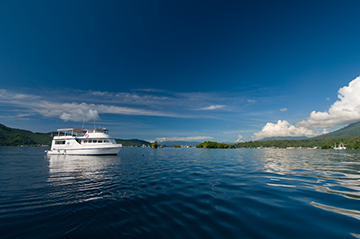 The place was Lembeh, a narrow 10-mile-long strait between Lembeh Island and the mainland of Sulawesi Island in Indonesia.The Stargazer looks like some kind of flatfish to all intents and purposes. Even when it’s not completely covered by sand, all you can see of it are a lure, huge mad staring eyes and two rows of teeth that would make Hannibal Lecter’s mask-maker proud. However, this view from above hides the truth about the Stargazer, which is that it’s a pretty fat animal that resembles a bulldog with gills. Amazingly, it can dig itself right down into Lembeh’s soft black volcanic sand, in just a few wiggles, till it completely disappears – and I mean completely! Then it sits, staring upwards towards the moon and stars, and it waits until a passing little fish gets curious about the shrimp bobbling about just above the sand and wanders over to take a closer look, to check if it’s indeed an edible morsel. That’s when the Stargazer strikes. Blink and you miss it! In a split-second and a puff of sand the unsuspecting fish is confined to history and the Stargazer has his meal. (“I’m having a fishy friend for dinner…”)
The place was Lembeh, a narrow 10-mile-long strait between Lembeh Island and the mainland of Sulawesi Island in Indonesia.The Stargazer looks like some kind of flatfish to all intents and purposes. Even when it’s not completely covered by sand, all you can see of it are a lure, huge mad staring eyes and two rows of teeth that would make Hannibal Lecter’s mask-maker proud. However, this view from above hides the truth about the Stargazer, which is that it’s a pretty fat animal that resembles a bulldog with gills. Amazingly, it can dig itself right down into Lembeh’s soft black volcanic sand, in just a few wiggles, till it completely disappears – and I mean completely! Then it sits, staring upwards towards the moon and stars, and it waits until a passing little fish gets curious about the shrimp bobbling about just above the sand and wanders over to take a closer look, to check if it’s indeed an edible morsel. That’s when the Stargazer strikes. Blink and you miss it! In a split-second and a puff of sand the unsuspecting fish is confined to history and the Stargazer has his meal. (“I’m having a fishy friend for dinner…”)
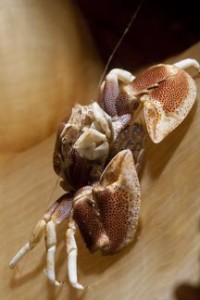
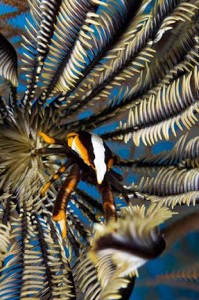 Stargazers aren’t monsters, of course, they’ve just brilliantly evolved to make it through their life cycle in one of the harshest marine environments on earth. The most striking feature of the Lembeh Strait is that, well… there aren’t any! You see, what makes Lembeh famous is the “muck diving”*, a way of describing the divers’ experience of diving over flat black volcanic sand. Not the most attractive of expressions, I grant you, but we’re actually the richer for it, because it’s this unforgiving habitat that forces species who live in Lembeh to “adapt or die”. To live on a flat sandy bottom, every species in Lembeh, without exception, has to do something pretty special or it won’t make it past breakfast. So the order of the day is camouflage.
Stargazers aren’t monsters, of course, they’ve just brilliantly evolved to make it through their life cycle in one of the harshest marine environments on earth. The most striking feature of the Lembeh Strait is that, well… there aren’t any! You see, what makes Lembeh famous is the “muck diving”*, a way of describing the divers’ experience of diving over flat black volcanic sand. Not the most attractive of expressions, I grant you, but we’re actually the richer for it, because it’s this unforgiving habitat that forces species who live in Lembeh to “adapt or die”. To live on a flat sandy bottom, every species in Lembeh, without exception, has to do something pretty special or it won’t make it past breakfast. So the order of the day is camouflage.
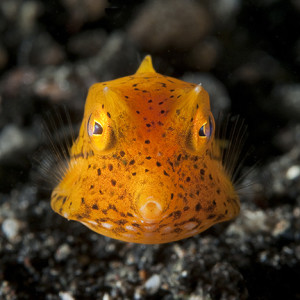
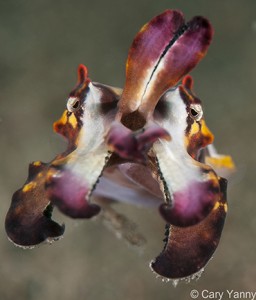 This is the realm of the pink Pigmy Seahorse that nestles in pink coral and grows lumps so that it looks like just a piece of the coral to any uneducated passer-by; the Coconut Octopus that grabs the two halves of the coconut shell and pulls them in around its body until it’s gone and all one can see is an inedible coconut lying on the sand; the Mimic Octopus that changes both its shape and colour to perfectly imitate more threatening species such as sea snakes or flounders. Not to mention Frogfish with perfect impressions of sponge and Stone Fish with perfect impressions of, erm, stones. And then there’s the Stargazer.
This is the realm of the pink Pigmy Seahorse that nestles in pink coral and grows lumps so that it looks like just a piece of the coral to any uneducated passer-by; the Coconut Octopus that grabs the two halves of the coconut shell and pulls them in around its body until it’s gone and all one can see is an inedible coconut lying on the sand; the Mimic Octopus that changes both its shape and colour to perfectly imitate more threatening species such as sea snakes or flounders. Not to mention Frogfish with perfect impressions of sponge and Stone Fish with perfect impressions of, erm, stones. And then there’s the Stargazer.
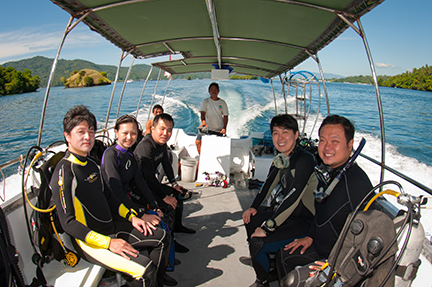 So it isn’t strictly true to say that Lembeh is featureless. To be fair, several Lembeh dive sites are covered in the most glorious coral walls and there’s even a couple of WWII wrecks thrown in to round off this most unique of spots and put it firmly in the “world class dive destinations” category.
So it isn’t strictly true to say that Lembeh is featureless. To be fair, several Lembeh dive sites are covered in the most glorious coral walls and there’s even a couple of WWII wrecks thrown in to round off this most unique of spots and put it firmly in the “world class dive destinations” category.
It’s a year-round destination, with tropical weather, flat seas and a backdrop of jungles and volcanoes. A populous region of Indonesia, North Sulawesi offers excellent resorts and dive centres to round off the offering on the ground. Getting there is comfortable, with flights on Singapore Air/SilkAir via Singapore Changi Airport and you can combine a stay in Lembeh with a Singapore Stopover on the way home. Alternatively, opt for some superb wall diving at Manado’s Bunaken National Park (next month’s instalment), or even combo further afield with Indonesia’s other iconic dive spots of Raja Ampat, Bali or Komodo (all also coming in future editions of our Indonesian dive guide).
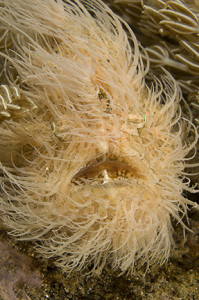
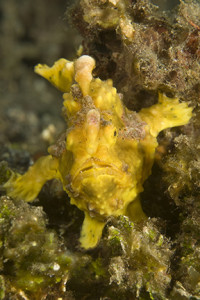 I’d suggest a two week holiday to give you enough time to get the most out of Lembeh because diving it is like peeling the layers of an onion – there’s another one underneath to discover.
I’d suggest a two week holiday to give you enough time to get the most out of Lembeh because diving it is like peeling the layers of an onion – there’s another one underneath to discover.
For Underwater Photographers, Lembeh is arguably the best underwater macro photography location on the planet. It really is as simple as that.
Lembeh has easy diving, but actually I’d say it’s more suited to experienced divers. Why? Well, when you think you’ve seen it all, that’s the time to go to Lembeh!
*The term Muck Diving was first used by Larry Smith, our dear friend who sadly passed away a few years ago. Larry put Lembeh diving on the map and was instrumental in training Lembeh’s guides. His legacy is the understanding, sense of wonder and pure enjoyment that hundreds of divers now enjoy in Lembeh each year.
For more information, visit www.diversetravel.co.uk/destinations/indonesia.
Gear News
Scubapro Free Octopus Promotion 2024

Free Octopus with every purchase of a SCUBAPRO regulator system
Just in time for the spring season, divers can save money with the FREE OCTOPUS SPRING PROMOTION! Until July 31st SCUBAPRO offers an Octopus for free
with every purchase of a regulator system!
Get a free S270 OCTOPUS with purchase of these combinations:
MK25 EVO or MK19 EVO with A700
MK25 EVO or MK19 EVO with S620Ti
MK25 EVO or MK19 EVO with D420
MK25 EVO Din mit S620Ti-X
Get a free R105 OCTOPUS with purchase of the following combinations:
MK25 EVO or MK19 EVO with G260
MK25 EVO or MK17 EVO with S600
SCUBAPRO offers a 30-year first owner warranty on all regulators, with a revision period of two years or 100 dives. All SCUBAPRO regulators are of course certified according to the new European test standard EN250-2014.
Available at participating SCUBAPRO dealers. Promotion may not be available in all regions. Find an authorized SCUBAPRO Dealer at scubapro.com.
More information available on www.scubapro.com.
Blogs
Northern Red Sea Reefs and Wrecks Trip Report, Part 3: The Mighty Thistlegorm

Jake Davies boards Ghazala Explorer for an unforgettable Red Sea diving experience…
Overnight, the wind picked up, making the planned morning dive a bit bumpy on the Zodiacs to the drop point on Thomas Reef. There, we would dive along the reef before descending through the canyon and then passing under the arch before ascending the wall with a gentle drift. The site provided great encounters with more pelagic species, including shoals of large barracuda, tuna, and bigeye trevally.
Once back on the boat, it was time to get everything tied down again as we would head back south. This time, with the wind behind us, heading to Ras Mohammed to dive Jackfish Alley for another great gentle drift wall dive before then heading up the coast towards the Gulf of Suez to moor up at the wreck of the Thistlegorm. This being the highlight wreck dive of the trip and for many onboard, including myself, it was the first time diving this iconic wreck. I had heard so much about the wreck from friends, and globally, this is a must on any diver’s list. Fortunately for us, there was only one other boat at the site, which was a rarity. A great briefing was delivered by Ahmed, who provided a detailed background about the wreck’s history along with all the required safety information as the currents and visibility at the site can be variable.

Kitting up, there was a lot of excitement on deck before entering the water and heading down the shoreline. Descending to the wreck, there was a light northerly current which reduced the visibility, making it feel more like the conditions that can be found off the Welsh coast. At 10m from the bottom, the outline of the wreck appeared as we reached the area of the wreck which had been bombed, as our mooring line was attached to part of the propeller shaft. Arriving on deck, instantly everywhere you looked there were many of the supplies which the ship was carrying, including Bren Carrier tanks and projectiles that instantly stood out.

We headed around the exterior, taking a look at the large propeller and guns mounted on deck before entering the wreck on the port side to take a look in the holds. It was incredible to see all the trucks, Norton 16H, and BSA motorcycles still perfectly stacked within, providing a real snapshot in time.

Overall, we had four dives on the Thistlegorm, where for all of the dives we were the only group in the water, and at times, there were just three of us on the whole wreck, which made it even more special, especially knowing that most days the wreck has hundreds of divers. Along with the history of the wreck, there was plenty of marine life on the wreck and around, from big green turtles to batfish, along with shoals of mackerel being hunted by trevally. Some unforgettable dives.

The final leg of the trip saw us cross back over the Suez Canal to the Gobal Islands where we planned to stay the night and do three dives at the Dolphin House for the potential of sharing the dive with dolphins. The site, which included a channel that was teeming with reef fish, especially large numbers of goatfish that swam in large shoals along the edge of the reef. These were nice relaxing dives to end the week. Unfortunately, the dolphins didn’t show up, which was okay as like all marine life they are difficult to predict and you can’t guarantee what’s going to be seen. With the last dive complete, we headed back to port for the final night where it was time to clean all the kit and pack before the departure flight the next day.

The whole week from start to finish on Ghazala Explorer was amazing; the boat had all the facilities you need for a comfortable week aboard. The crew were always there to help throughout the day and the chefs providing top quality food which was required after every dive. The itinerary providing some of the best diving with a nice mixture of wreck and reef dives. I would recommend the trip to anyone, whether it’s your first Red Sea liveaboard in the Red Sea or you’re revisiting. Hopefully, it’s not too long before I head back to explore more of the Red Sea onboard Ghazala Explorer.

To find out more about the Northern Red Sea reef and wrecks itineraries aboard Ghazala Explorer, or to book, contact Scuba Travel now:
Email: dive@scubatravel.com
Tel: +44 (0)1483 411590
Photos: Jake Davies / Avalon.Red
-

 News3 months ago
News3 months agoHone your underwater photography skills with Alphamarine Photography at Red Sea Diving Safari in March
-

 News3 months ago
News3 months agoCapturing Critters in Lembeh Underwater Photography Workshop 2024: Event Roundup
-

 Marine Life & Conservation Blogs2 months ago
Marine Life & Conservation Blogs2 months agoCreature Feature: Swell Sharks
-

 Blogs2 months ago
Blogs2 months agoMurex Resorts: Passport to Paradise!
-

 Blogs2 months ago
Blogs2 months agoDiver Discovering Whale Skeletons Beneath Ice Judged World’s Best Underwater Photograph
-

 Marine Life & Conservation2 months ago
Marine Life & Conservation2 months agoSave the Manatee Club launches brand new webcams at Silver Springs State Park, Florida
-

 Gear Reviews3 months ago
Gear Reviews3 months agoGear Review: Oceanic+ Dive Housing for iPhone
-

 Gear Reviews2 weeks ago
Gear Reviews2 weeks agoGEAR REVIEW – Revolutionising Diving Comfort: The Sharkskin T2 Chillproof Suit
















